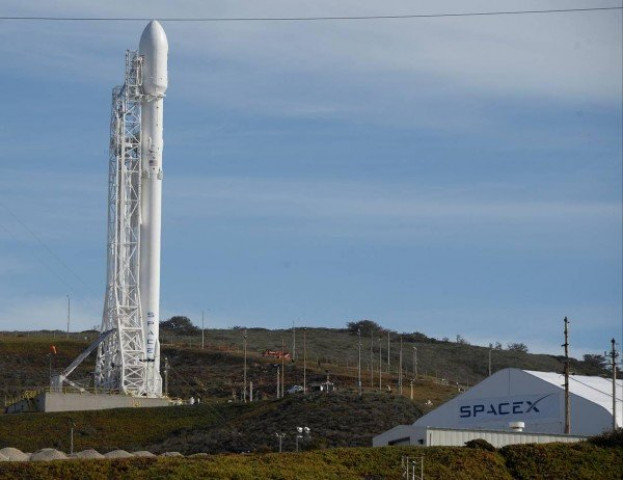SpaceX launches climate satellite but botches ocean landing
A successful ocean landing would have marked a second milestone for SpaceX

A successful ocean landing would have marked a second milestone for SpaceX a month after it nailed a spaceflight first with a successful ground landing in Florida. PHOTO: REUTERS
The first stage of the rocket made it back to the platform, which was floating in the Pacific Ocean, but one of the rocket’s landing legs failed to latch into position, SpaceX founder and Chief Executive Elon Musk wrote on Twitter.
SpaceX to launch rocket Dec 19, six months after blast
“It tipped over after landing,” the technology entrepreneur said.
The 22-story tall rocket lifted off through thick fog from Vandenberg Air Force Base on the central California coast at 10:42 a.m. PST (1842 GMT).
A successful ocean landing would have marked a second milestone for SpaceX a month after it nailed a spaceflight first with a successful ground landing in Florida, a key step in Musk's quest to develop a cheap, reusable rocket.
The company's two previous ocean-landing attempts in 2015 were also unsuccessful. Being able to land at sea would give the company flexibility to recover rockets used on more demanding missions, such as launching heavy satellites, when boosters do not have enough fuel left to reach land.
SpaceX Falcon rocket nails safe landing in pivotal space feat
Sunday's SpaceX launch succeeded in its primary goal to put the US- and European-owned Jason-3 satellite into orbit 830 miles (1,336 km) above the planet. The 1,200-pound (550 kg) spacecraft is the fourth in a series of ocean-monitoring satellites taking center stage in monitoring Earth's climate.
"More than 90 percent of all the heat being trapped in the Earth's system ... is actually going into the ocean," said Laury Miller, Jason-3 lead scientist with the National Oceanic and Atmospheric Administration. "This makes the ocean perhaps the biggest player in the climate change story."
NOAA is one of five agencies partnering on the $180 million, five-year Jason-3 program.
Jason-3 is designed to bounce radio waves off the ocean and time how long it takes the reflected signals to return. Scientists can use the information to figure out ocean heights to within 0.2 inches (0.5 cm), said Josh Willis, with NASA's Jet Propulsion Laboratory in Pasadena, California.
"This is one of the most important yardsticks we have for human-caused climate change," Willis said, adding that heat, plus runoff water from melting ice sheets, causes ocean levels to climb.
SpaceX postpones rocket launch until Monday
Jason-3 can also chart ocean currents, which impact weather phenomena such as this year's powerful El Nino system, monitor tsunamis and track oil spills.



















COMMENTS
Comments are moderated and generally will be posted if they are on-topic and not abusive.
For more information, please see our Comments FAQ